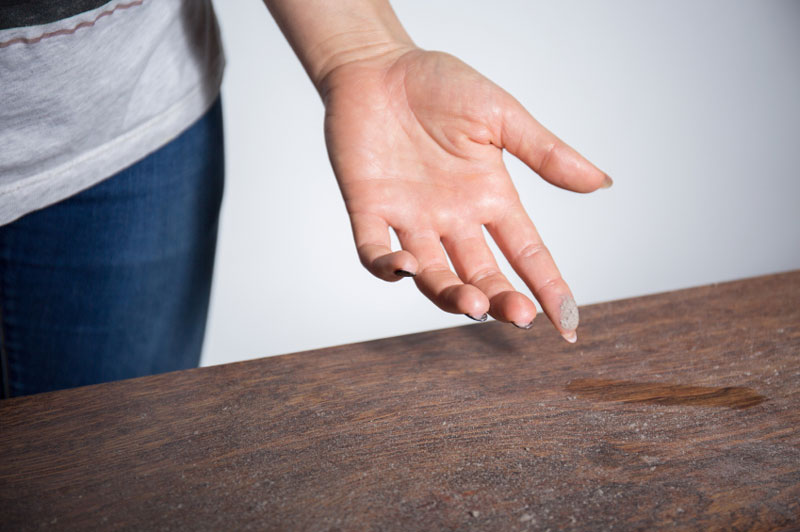Author:
Julia Weaver
The truth is you don’t have to leave your home for your allergy symptoms to flare up. In fact, Americans spend about 90 percent of their time indoors, where the concentration of pollutants can actually be two to five times higher than outdoors. And even though freezing temperatures bring an end to some allergies, fall and winter allergens can still flourish in your home. So, whether you live in Miami, FL, or a city like Portland, OR where the cold, wintry months are keeping you indoors, you can still fall victim to year-round indoor allergies.
While it’s impossible to get rid of allergens entirely, you can take some simple steps to allergy-proof your home and reduce your exposure.

Where are allergens found in the home?
Indoor allergens tend to be concentrated in the areas where we spend the most time. So, the bedroom and living room are likely the top allergen hotspots in many homes. Dust mites, pollen, and pet dander can accumulate in soft surfaces – mattresses, pillows, carpet, and window treatments – and can lead to uncontrollable dust in your house.
Basements are also known to harbor mold, irritants, and dust, particularly in climates that are prone to dampness and flooding. And, the bathroom, an area of high-humidity from showers and baths and poor ventilation, is an ideal breeding ground for mold.
What could be triggering your indoor allergies?
-
Dust mites: Dust mites are microscopic insects that are among the most common indoor allergens. These tiny bugs thrive in warm, moist environments, which means bedding and soft furniture are often filled with these invisible pests. Although they don’t bite, they can inflame the nasal passages, leading to itchy, watery eyes and nasal congestion as indoor allergy symptoms.
-
Mold: Mold is another common household allergen. It tends to grow in damp, dark places like basements, behind drywall, and in small, poorly-ventilated bathrooms. Like dust mites, mold can cause respiratory problems along with dry, itchy skin. Some types of mold, like black mold, are more toxic than others.
-
Ragweed pollen: Pollen can be easily tracked indoors, so the indoor pollen levels may be higher than you think. Pets can also carry ragweed pollen inside, which is why some people mistakenly think they are allergic to dogs when it’s actually the ragweed or another irritant that’s hitching a ride with Fido.
-
Cockroaches: Homes in southern areas may harbor cockroaches that secrete allergens in their saliva and feces. It’s a common myth that the chemicals used to eradicate cockroaches cause allergic reactions, when in fact the bugs themselves are the culprits.
-
Pet dander: If your household includes four-legged members, you may be exposed to more allergen triggers than you think. Cats and dogs shed invisible dust and dander particles that can become airborne and travel throughout your home with ease. Even the protein in animal saliva, urine, and feces can cause indoor allergies in some people
How to get rid of allergens in your home
Indoor allergens trigger the same reactions you’d expect from outdoor irritants, with one major exception — allergens in your home cause year-round allergy symptoms that are normally associated with hay fever or seasonal, allergy-induced asthma. Here are 10 things you can do to allergy-proof your home:
1. Keep your carpet and rugs clean
Studies have shown up to 85 percent of dust, dander, and pollen comes in on the bottom of shoes. And while carpets can help keep your floors warm and comfortable, they tend to exacerbate indoor allergies. They can trap irritants like pet dander, dust, and pollen, only to re-release them again every time someone walks on the carpet. Worse yet, it’s virtually impossible to vacuum up particles that become trapped in the carpet.
If you have carpet, be sure to vacuum at least once a week with a HEPA-certified vacuum. Consider having your carpet professionally cleaned at least once a year. Try placing a small, washable mat near your door to help trap dust, pollen, and other irritants before they are tracked into your living space.
2. Hire pest control
There are several DIY ways to get rid of cockroaches, however, the effectiveness of these home remedies is debatable, and some may even trigger or worsen allergies. The best way to deal with a cockroach infestation is through a professional pest control company. They’ll inspect your home to look for current or potential problems, get pests out of your home, and help to keep them out.
3. Consult with a home inspector
Some mold, like mildew, lives on damp surfaces and is relatively easy to clean with a 1-to-8 bleach/water solution. Other types are more insidious and can live in drywall, carpet, insulation, or other hard-to-reach places. This type of fungus takes elbow grease to remove and depending on the severity of your indoor allergy, it may not be a good idea for you to be in close proximity. An experienced home inspector can check your house for signs of mold and other allergens and make a recommendation on how to proceed.
4. Invest in zip-on dust mite covers
Since you can’t wash your mattress, the next best thing is to regularly vacuum it and let it air out in a dry environment. You can also encase it in a specially-designed, dust mite-proof mattress cover. These washable covers are also available for your pillows to prevent build-up and make it easy to allergy-proof your bedroom.
5. Install washable window covers
Replace heavy, thick curtains with ones that you can remove and clean regularly. Install wipeable roller blinds in place of those hard-to-clean mini blinds.
6. Vacuum and dust regularly
Use a strong, high-quality vacuum to clean any remaining carpets and soft surfaces like sofas and chairs. Remember to clean the dust off from behind electronics like your television, speakers, and fridge. Consider hiring a professional cleaning company to guarantee a thorough job and to prevent your allergies from acting up as you clean.
7. Use unscented cleaning products
Strong scents are a common irritant, so be sure to choose only unscented cleaning products. Avoid using artificial air fresheners that may trigger indoor allergies and breathing problems among people who suffer from asthma. Natural fabric sprays can also help remove allergens from the couch and furniture.
8. Keep your furnace filter clean
Purchase a high-quality air filter for your HVAC system. Remember to change the filters regularly, about every two months, in order to cut down on the allergens that are re-circulated throughout your heating and cooling vents.
9. Check the air quality outside
Air pollution levels change dramatically on an hourly basis and can also be different from one street to the next. Try using a free air quality app to stay up to date with the air quality around your house. This will help you take preventative measures like closing windows and switching on an air purifier when the air quality gets particularly bad outside.
10. Use a dehumidifier to reduce indoor allergies
A dehumidifier is a small machine that removes excess moisture from the air, making it difficult for mold and mildew to grow. It can also keep dust mites at bay since these creatures thrive in damp environments. Be sure to talk to your doctor if you’ve experienced sinus issues, as the dry air can actually exacerbate some sinus problems.
While it’s impossible to get rid of allergens entirely, you can control their impact at home. Once you identify your triggers and learned where the allergen hotspots are in your home, you can act accordingly to stop the spread of dust, dander, pollen, mites, and other unwelcome guests. By taking these steps, you will ultimately create a home environment that is healthier and more comfortable for you and your family.
Source: redfin


